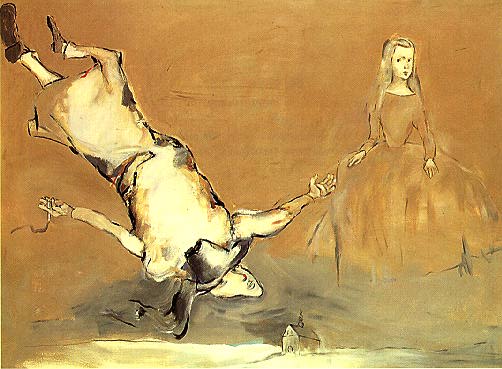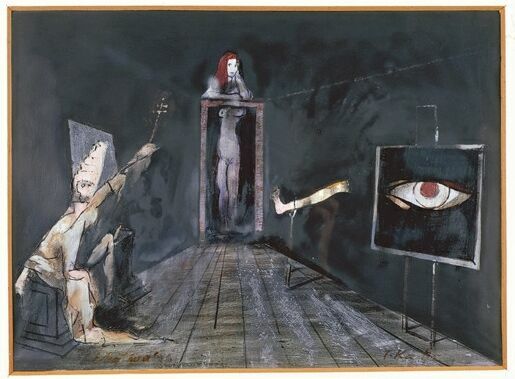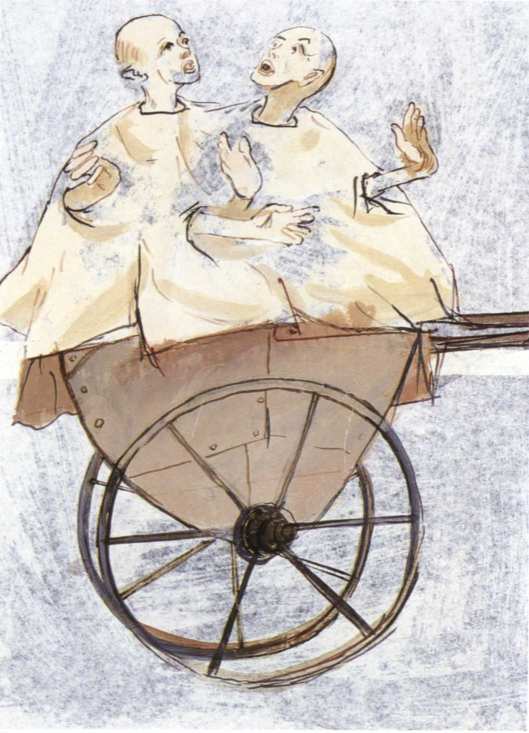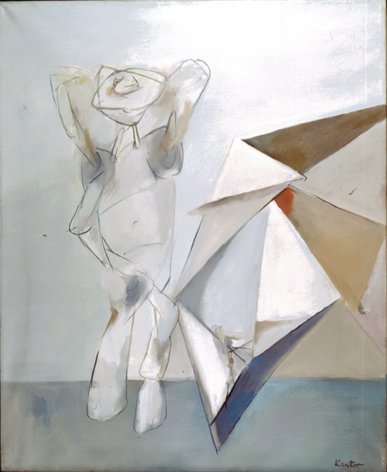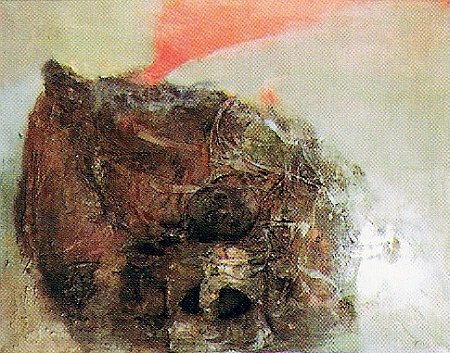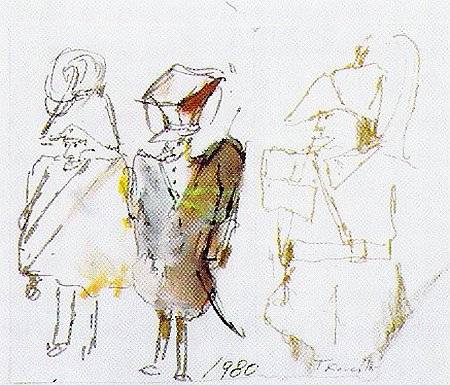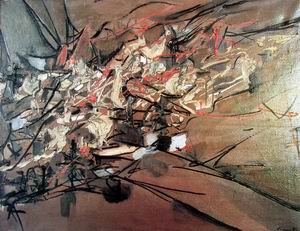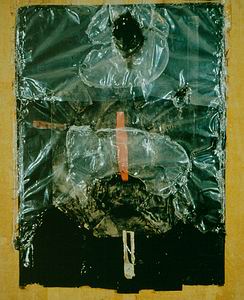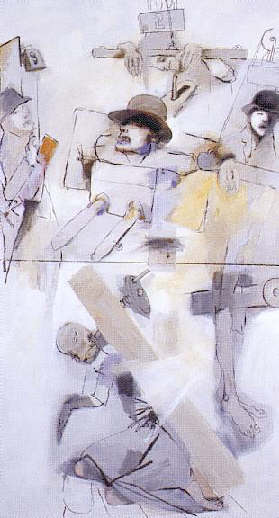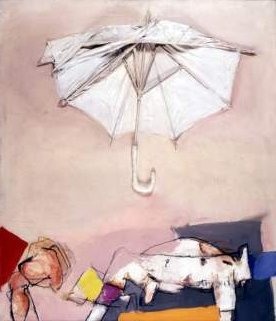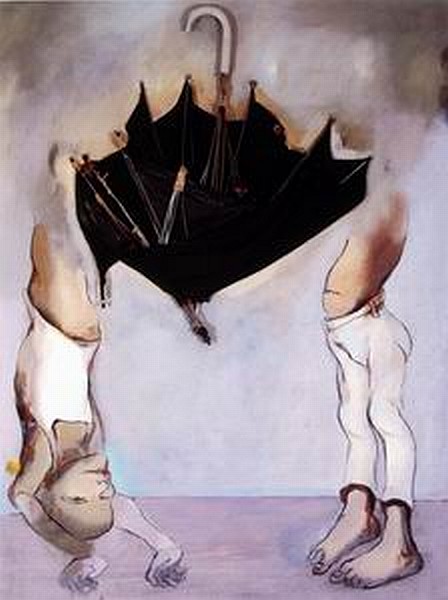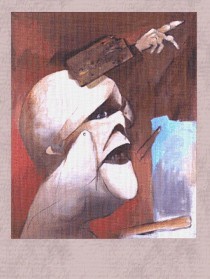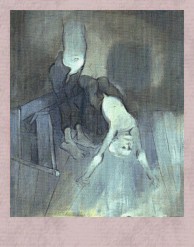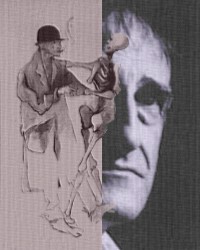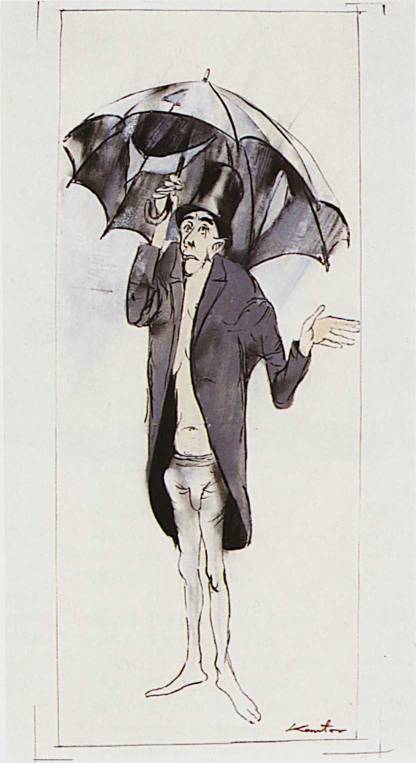text based mostly on: "http://www.culture.pl/en/culture/artykuly/os_kantor_tadeusz"
Tadeusz Kantor - LIFE AND WORKS

| TADEUSZ
KANTOR Born in 1915, died in 1990. Stage director, creator of happenings, painter, scenery designer, writer, art theoretician, actor in his own productions, lecturer at the Academy of Fine Arts in Krakow. Kantor was inspired by Constructivism, Dada, Informel art, and Surrealism. He was educated at the Academy of Fine Arts in Krakow, studying under the eye of Karol Frycz, an outstanding stage designer of the inter-war period. Immediately after the war, he worked as a scenery designer, mostly for the Helena Modrzejewska Old Theatre (Stary Teatr im. Heleny Modrzejewskiej) in Krakow. He continued to design for the stage (primarily abstract scenery) on a regular basis through the end of the 1960s. A voyage to Paris in 1947 provided the impulse that helped him to crystallize his individual approach to painting. In 1948 he founded the GRUPA KRAKOWSKA / KRAKOW GROUP and participated in the Great Exhibition of Modern Art (Wielka Wystawa Sztuki Nowoczesnej) in Krakow. His life in the theatre began early, when during the German occupation he created an underground experimental theatre in Krakow. This theatre acted to integrate the artistic community of the city and found a worthy heir in the CRICOT 2 Theatre, formed in 1956. Theatre, in which he would develop and test his creative ideas. Cricot 2's first premiere was MATWA / THE CUTTLEFISH, after Stanislaw Ignacy Witkiewicz (1956), a production in which Kantor cleverly juxtaposed the piece's sublime text against found objects and the primitive environment of a café audience. With the play UMARLA KLASA / THE DEAD CLASS, Kantor developed another phase in his theatre, a direction the artist named the "Theatre of Death." It is this phase that includes what are considered the artist's most exceptional and best known productions, including WIELOPOLE, WIELOPOLE (1980), NIECH SZCZEZNA ARTYSCI / LET THE ARTISTS VANISH (1985), NIGDY JUZ TU NIE POWROCE / I SHALL NEVER RETURN HERE (1988), and the posthumously produced DZIS SA MOJE URODZINY / TODAY IS MY BIRTHDAY (1991), the primary motif of which is death, transcendence, as well as memory and the history inscribed in memory. The productions of the "Theatre of Death" highlighted a concept present in Kantor's entire oeuvre, namely, his concept of "Reality of a Lower Order", "which continuously demands that I examine and express issues through low status substance, the lowest possible, substance that is poor, deprived of dignity, prestige, that is defenseless and often simply contemptible." |
Immediately after World War II, Kantor
found himself among those who created the YOUNG VISUAL ARTISTS'
GROUP (1945), and once again demonstrated
his penchant for organization following the "thaw"
of the mid 1950s by contributing to the
reactivation of the pre-war KRAKOW GROUP (1957). He provided
the impulse for the creation of the Krzysztofory
Gallery, one of the country's first post-war
galleries to present contemporary art, and was
involved in organizing the 1ST MODERN ART EXHIBITION (Krakow,
1948). He was an animator of artistic life,
an art theoretician and practitioner, a painter
(including an impassioned promoter of Tashism),
and one of Poland's first creators of happenings.
Above all, however, he was a man of the theatre, a
playwright, director, scenery designer, and
actor. |

UMARLA KLASA / THE DEAD CLASS (photo)


